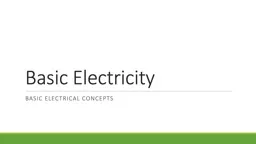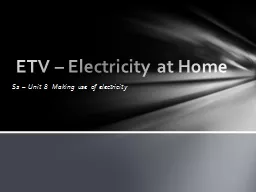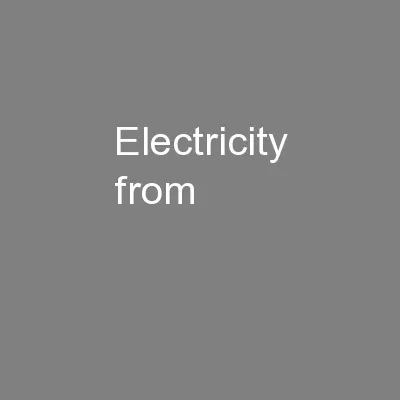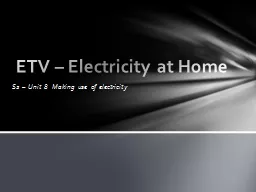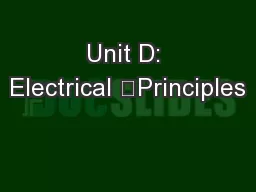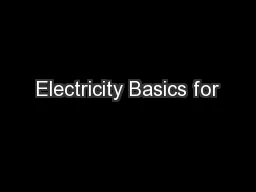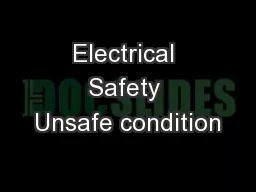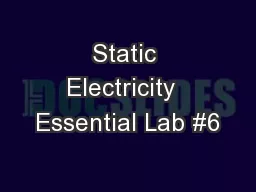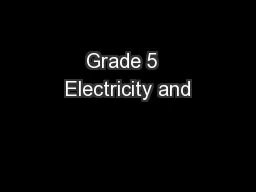PPT-Basic Electricity Basic electrical
Author : karlyn-bohler | Published Date : 2019-12-29
Basic Electricity Basic electrical concepts Except where otherwise noted these materials are licensed Creative Commons Attribution 40 CC BY Objectives The objective
Presentation Embed Code
Download Presentation
Download Presentation The PPT/PDF document "Basic Electricity Basic electrical" is the property of its rightful owner. Permission is granted to download and print the materials on this website for personal, non-commercial use only, and to display it on your personal computer provided you do not modify the materials and that you retain all copyright notices contained in the materials. By downloading content from our website, you accept the terms of this agreement.
Basic Electricity Basic electrical: Transcript
Download Rules Of Document
"Basic Electricity Basic electrical"The content belongs to its owner. You may download and print it for personal use, without modification, and keep all copyright notices. By downloading, you agree to these terms.
Related Documents

